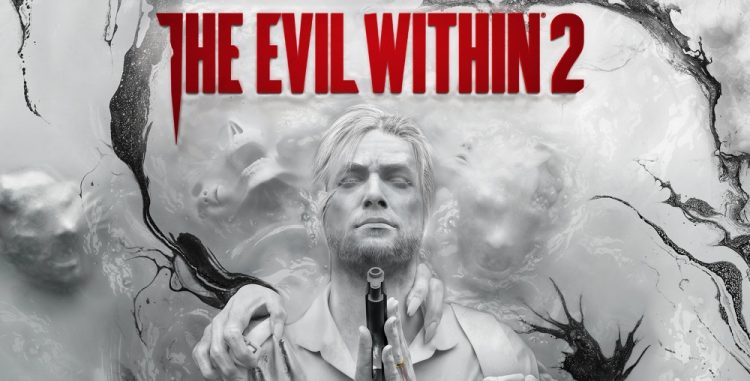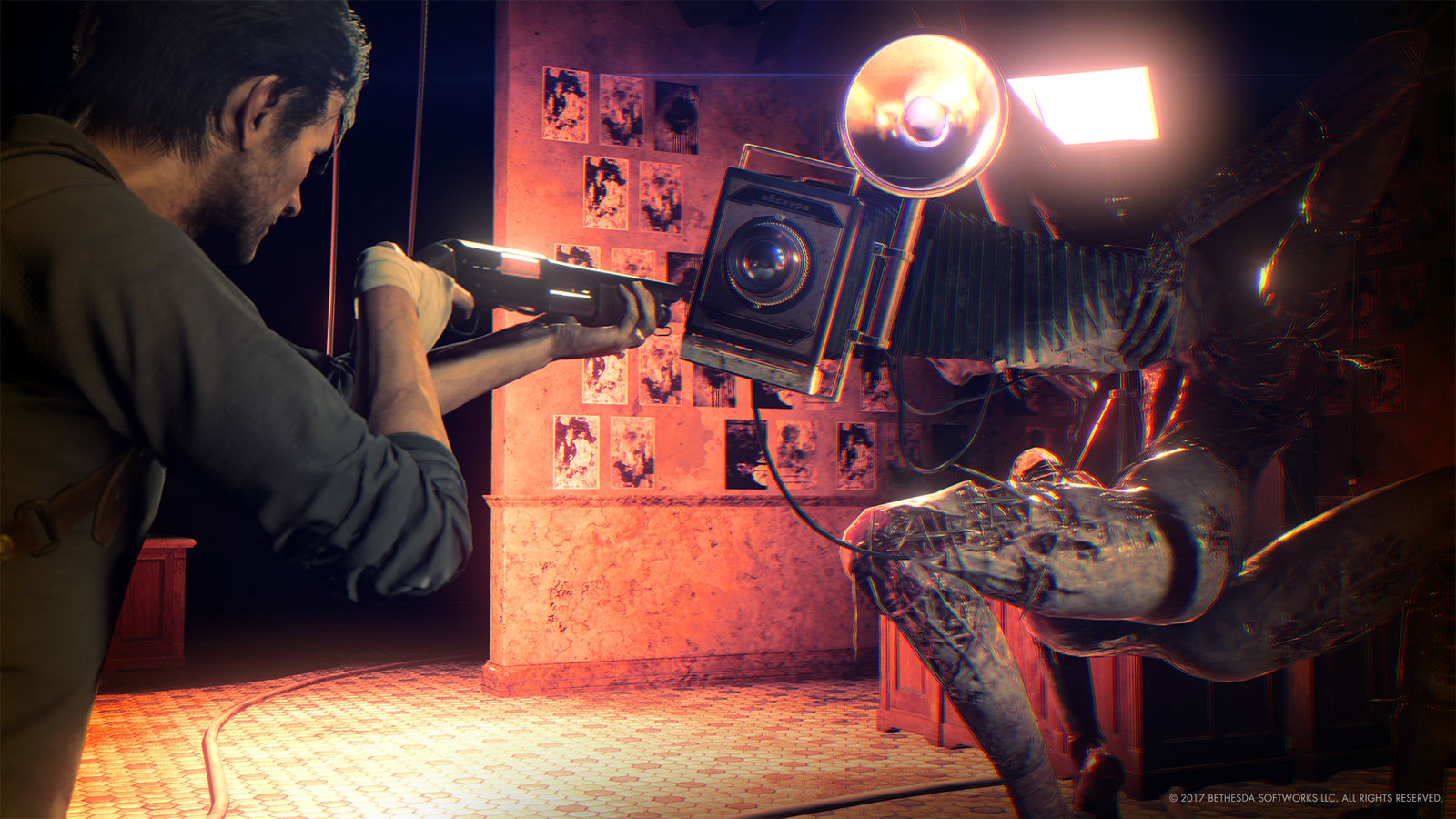I’d be lying if I said I wasn’t looking forward to The Evil Within 2. As someone who’s logged over 100 hours in the first game, I was constantly begging Bethesda for a follow-up—especially since the first game had so many unresolved plot points. So you can imagine my excitement when the sequel was finally announced during E3 2017. Now that the game has finally been released and I’ve played through it twice, I’m a bit conflicted. Sure, it’s a good game, yet it doesn’t feel like The Evil Within. Is that a bad thing?
Publisher(s): Bethesda
Developer(s): Tango Gameworks
Release Date: Oct. 13, 2017
Price: $59.99
Also Available On: PlayStation 4, Xbox One
Link: Official site
Alright, before we dive into the review, I wanted to address something important. While we all know that Shinji Mikami was responsible for The Evil Within, he did not direct the follow-up. Instead, that honor went to John Johanas. Now, before you ask who he is and why he was given this role, let me explain. If you played the DLCs The Assignment and The Consequence, then you’re already familiar with his work. I’ve always said those two were my favorite DLCs for the game, so I’m glad to see he had a chance to work on a full game. Shinji Mikami vouched for John, stating that he has a lot of talent and would do the sequel justice. And if my two playthroughs of the game are any indication, John Johanas has done a fantastic job here.
Upon starting The Evil Within 2, we find Sebastian to be a broken man. He’s lost everything he ever cared about: his daughter, Lily; his wife, Myra; his job; and even his friendship with Juli Kidman. It turns out that she was never a detective but was actually sent to spy on Sebastian. Now, at the end of his rope, we find Sebastian wasting his days away at the local tavern—until Juli Kidman shows up unexpectedly and tells him that not only is his daughter alive, but she can help him get her back. Apparently, her death was a cover-up so that Mobius could use her as a core for STEM. Being a child makes her the perfect candidate. So here we are: Sebastian wants a chance for redemption by saving his child, and Juli wants to help him. After a bit of catching up, you’re sent on your way to Union.
A Whole New Setting
The city of Union is where the game takes place, and while we’re informed that Union is nothing like Beacon—where the first game took place—we quickly discover that nothing is what it seems. Things are completely out of whack, creatures are roaming the streets, and worse, there’s a crazy guy named Stefano who is hell-bent on stopping Sebastian from reaching his goal. Apparently, being the core gives Lily immense power, and Stefano wants that power to turn Union into his vision of a masterpiece. Naturally, he sees you as a thorn in his plans and needs you out of the picture.
Packing A Few New Tricks
But what chance does a washed-up detective have against a madman? Well, it turns out that Sebastian hasn’t lost his step since The Evil Within—He’s gained a few new abilities. Now he can quickly turn around to address threats behind him. Additionally, he’s improved his stealth thanks to a new cover system. He can now crouch and lean around corners and other objects to stay hidden. He still retains his ability to deliver instant kills if he can successfully sneak up on someone. Plus, he has access to a knife, so he doesn’t have to depend solely on his bare hands, unlike in the original entry.
The skill tree from the first game makes its return, along with some upgrades. You can now choose from five different branches and level them up, allowing you to customize Sebastian’s abilities. You can boost his health, combat abilities, stamina, stealth, and recovery skills. Just like in the first game, you’ll find green gel that you’ll need to acquire these upgrades. Initially, I thought that this expanded tree would be a hindrance; however, after getting acquainted with it, I found it to be superior to the one in The Evil Within. There are numerous possibilities that will help you throughout the game, including helpful escape tactics.
Then there’s the crafting system, which is a game-changer. This system allows you to craft ammo and health items either in your “safe house” or in the game world. This can easily turn a bad situation into a good one—assuming you have the materials. However, I felt that this also cheapens the game’s immersion and, in some instances, breaks the experience. You can craft at any time, even in the middle of a fight or during a boss battle. Doing this also pauses the game, which removes the suspense of the moment. It’s a great system, but one that I feel was poorly implemented.
Multiple Improvements Over The First Game
Unlike the first game, The Evil Within 2 is actually quite ambitious. It goes beyond what I honestly expected. For example, the game isn’t as linear as its predecessor. While the introduction and initial pacing are straightforward, the game heavily shifts and begins to offer options. Instead of being forced along a corridor, you’re dropped into a hub that you’ll frequent for the majority of the game. Here, you can focus on the main story or split off to work on several side missions. Being given the choice of what to do is a nice touch. While focusing on the story ensures that you’ll eventually beat the game sooner, the side missions yield valuable items and provide additional backstory.
The pacing, which was a significant complaint from the first game, is definitely better here. I never felt that the story moved too fast or dragged on. The writing was decent and clearly explained what was happening. Additionally, there were plenty of supporting characters that helped advance the game. I grew to enjoy several NPCs, worrying about whether they would survive until the end. Many of them had their own stories within the game that progressed parallel to yours.
The fact that Tango Gameworks has changed so much from the first outing leaves me conflicted. On one hand, I enjoyed the retooled gunplay, which feels responsive and fun. The expanded skill tree also offers various ways to customize Sebastian. All of this is positive, but then there’s the gripe: while the game has its share of horror, it feels watered down. Sebastian is solely focused on getting his daughter back, which is fine, but so much has been sacrificed for him to accomplish this. Sure, you encounter a few crazy creatures, and the game maintains a steady amount of suspense, but it just isn’t as scary—It lacks the charm of the first game, which I sorely missed. For the most part, it feels more like an action game with some horror elements tossed in, rather than the other way around. The memorable encounters that defined the first game are absent here—unless you count the parts that force you to relive the original game. Fans of the first game will enjoy this, but some may be put off by the emphasis placed on combat.
The Things That Make You Go Ohhhhh
Graphically, the game looks amazing. Aside from a few texture issues, the art direction and style were enjoyable. Performance-wise, I was able to run the game at both 1080p and 1440p on high settings at a smooth 60 frames per second for the most part. I did encounter segments where the frame rate dropped between 55 and 60 frames per second, but this was not frequent. The game engine, a heavily modified id Tech 5, is leaps and bounds better than that of the original game. I don’t know what magic Tango Gameworks worked to achieve such smooth performance, but it’s greatly appreciated.
The sound design was also decent. The gunshots were loud and impactful, while footsteps on certain surfaces forced you to tread carefully around specific creatures. I particularly enjoyed the screams and cries from the enemies. The music was dramatic, adding just the right amount of tension at key moments. If there’s anything I felt could have been better, it would be the voice acting—specifically, Sebastian’s. It’s not that his performance is bad; he just talks too much. With so many one-liners, I found myself wishing he would revert to his more reserved demeanor from the first game.
What About The Missing Pieces
While I’m glad to see that this game provides Sebastian with a redemption story, there are still lingering issues from the first game that I wish were addressed. This may be somewhat spoilerish, so I apologize if you haven’t played the first game. The game never once addresses Ruvik. Not only did he develop STEM, but by the end of the first game, it appears he survived. He’s an important figure in the series lore, and I hope he resurfaces later. At the same time, while Sebastian does get his daughter back, the game ends on a cliffhanger—which I won’t discuss here. And what about poor Joseph, who many believed to be dead in the first game? His body was never recovered, yet he appears in both of Juli Kidman’s DLC. In The Evil Within 2, Juli mentions that Joseph is still alive, and they’re supposed to discuss it at a later time. But when exactly will that happen?
Here’s hoping this isn’t the final chapter of The Evil Within. There’s still so much more that can—and should—be explored. Judging by certain events in the game, we can at least expect some DLC expansions.
That said, as a survival horror fan, I enjoyed the journey. My first playthrough clocked in at 16 hours, with a substantial amount of that spent exploring. My second playthrough, however, took about 14 hours, though I still managed to miss a few items and collectibles.
Now, if you’ll excuse me, I need to go punish myself by playing the classic mode. Wish me luck!
Affiliate Link Disclosure: One or more of the links above contain affiliate links, which means at no additional cost to you, we may receive a commission should you click through and purchase the item.
Summary
The Evil Within 2 does a good job of finishing the original story. Seb gets reunited with his daughter and overcomes his guilt. That said, the game revisits multiple events from the first game. This assumes you’ve played it and if not, you’re left following scraps of content from the game. Outside of the story, the game is quite different from the first. It’s a good follow-up, even if the horror takes a back seat to the action. Thankfully the game also addresses the performance issues from the first game and it runs like a champ (if you have the hardware). A solid entry for those new to the survival horror genre. While veterans may be a bit disappointed as the game puts more focus on combat than providing the scares. Still, fans of the first game will eat this up and come back for seconds.




